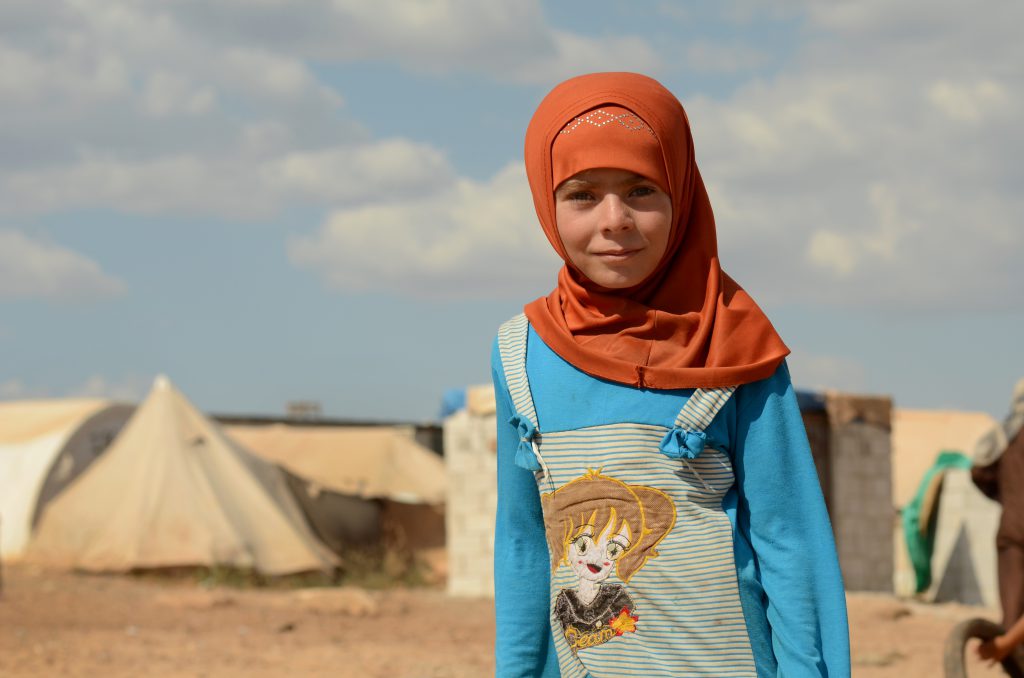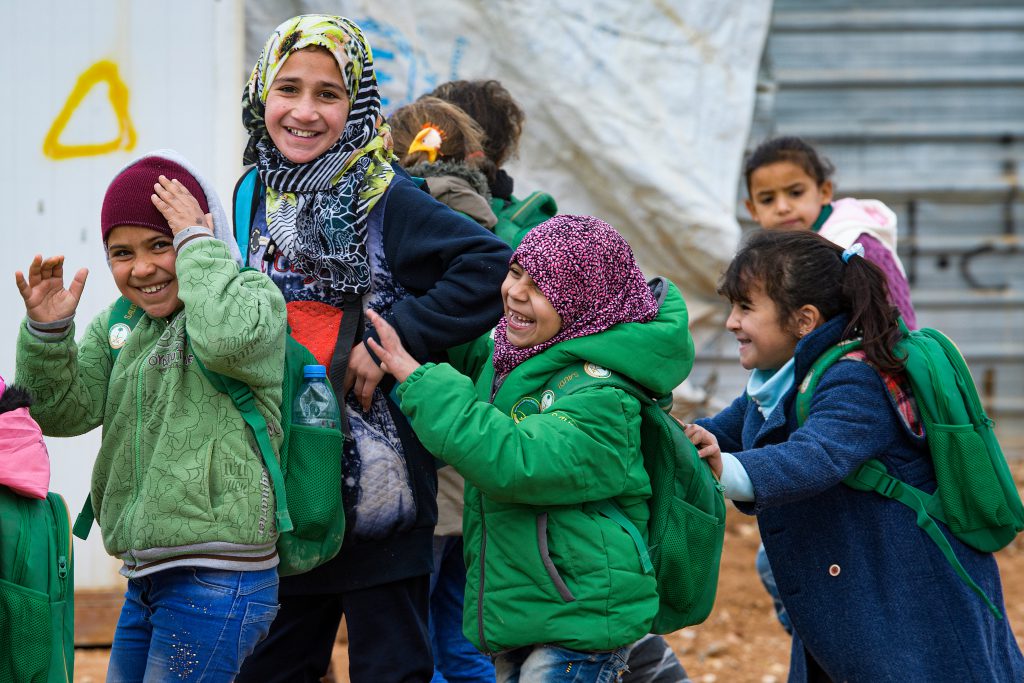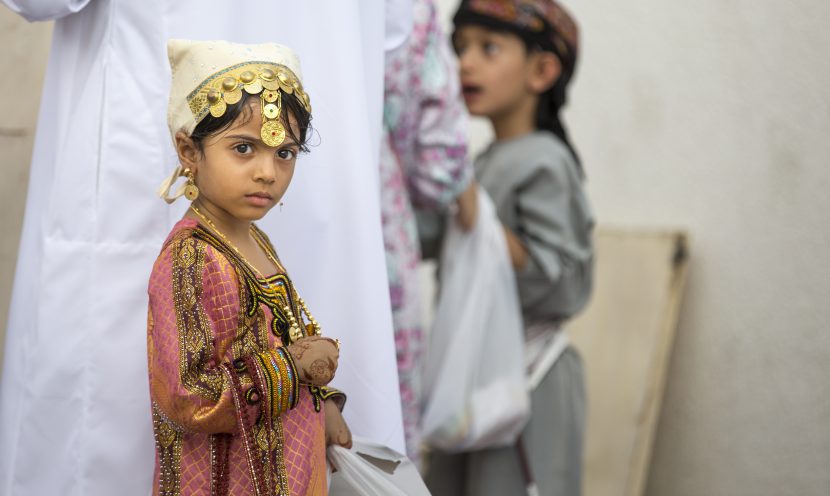COVID-19 has exacerbated pre-existing vulnerabilities and amplified human rights challenges across the globe. In the Middle East and North Africa (MENA) region, young children from at-risk populations – girls in particular – have been forced to face an array of new hardships including an increased risk of child marriage. A recent public statement from UNICEF stated that the pandemic may force an additional 10 million girls towards child marriage across the globe (Diab, 2021).
With the MENA region accounting for 40 million of the world’s 650 million child brides, there is growing concern that the pandemic’s effects will increase the number of girls forced into early marriage (UNICEF 2021). In particular, the pandemic threatens to catalyse higher rates of child marriage among Syrian refugee communities across and throughout the region.
The definition of child marriage
Child marriage – also termed ‘early marriage’ – is broadly defined as a legal or customary union involving a boy or girl under the age of 18 (UNICEF, 2021). Marriages entered into without consent are defined as “forced marriages” and child marriage is often subsumed by this broader definition because children under 18 are deemed incapable of providing valid consent in many jurisdictions (UNICEF, 2021).
The world hosts in excess of 650 million girls and women who were married as child brides (UNICEF, 2021). The MENA region produces roughly 700,000 child brides each year; one in five girls are married before the age of 18 in the region, similar rates to the global average (UNICEF, 2021). Child marriage is a “severe human rights violation” that frequently deprives children of other rights: education, health, well-being among others (UNICEF, 2021). As child marriage disproportionally affects girls, it is a large-scale manifestation of gender-based violence which reflects the continued existence of patriarchy and gender inequality (UNICEF, 2021).
The international framework for the protection of children against child marriage is spread across numerous instruments. Article 19 of the United Nations Convention on the Rights of the Child obliges states to take all appropriate measures to protect children from all forms of ‘physical or mental violence, injury or abuse, neglect or negligent treatment, maltreatment or exploitation, including sexual abuse, while in the care of parent(s), legal guardian(s) or any other person who has the care of the child’ (United Nations General Assembly, 1989). These obligations include, under Article 19, a responsibility to establish social programmes and protective mechanisms to both prevent and follow-up on instances of child maltreatment (United Nations General Assembly, 1989).
The targeted victimisation of women in child marriages is reflected in the United Nations Convention on the Elimination of Discrimination Against Women, which calls on states to eliminate discrimination against women in ‘all matters relating to marriage’ (United Nations General Assembly, 1979). The Convention urges all states to ensure boys and girls have the same right to enter into marriage and to freely choose a spouse (United Nations General Assembly, 1979).
Regionally, Article 21 of the African Charter on the Rights and Welfare of the Child protects children against harmful social and cultural practices (African Union, 1990). Further, the Charter places an obligation on state parties to eliminate practices which are prejudicial to the health of the child and discriminatory to the child based on sex or other status (African Union, 1990). The Charter explicitly prohibits child marriage and mandates the implementation of national legislation which requires all marriages to be registered and outlaws’ marriages of minors under the age of 18 (African Union, 1990).
The importance of the MENA region
The MENA region is blighted by an array of overlapping factors which increase the risk of child marriage. The recent prevalence of conflict and civil unrest in Syria has birthed thousands of refugees who make up some of the region’s most vulnerable adults and children. Nearly six million Syrian refugees are registered asylum seekers in the region (Diab, 2021).

Cultural and religious perceptions of women as inferior to men push more girls into child marriages, exacerbated by low rates of education within and throughout the region. Case study examples help to illuminate some of the challenges forcing young girls into undesired marriages.
Egypt
Egypt has a child marriage prevalence of 2% of girls married before the age of 15 and 17% married before the age of 18 (UNICEF, 2021). The Egyptian Child Law of 2008 does not criminalise child marriage, despite setting the minimum age of marriage at 18 (UNICEF, 2021). This paradox enables child marriages to continue with impunity. Vulnerability is heightened by high numbers of impoverished communities, low rates of education and the frequency of harmful cultural practices such as female genital mutilation (FGM) (UNICEF, 2021).
Forced human migration triggered by human trafficking and a growing regional refugee crisis creates larger numbers of vulnerable children (UNICEF, 2021). Among the displaced, recent evidence suggests that Syrian girls face increased rates of child marriage (UNICEF, 2021).
To combat these challenges, in 2014, Egypt developed a National Strategic Plan (NSP) for the prevention of child marriage which aimed to reduce the phenomenon by 50% in five years (UNICEF, 2021). The National Council for Childhood and Motherhood (NCCM) supported this framework with the establishment of reporting mechanisms, various helplines and other forms of support for women and children (UNICEF, 2021).
Jordan
Jordan has a child marriage prevalence of 1% of girls married before the age of 15 and 10% married before the age of 18 (UNICEF, 2021). Similar to Egypt, child marriage has reportedly increased dramatically following the influx of Syrian refugees, 80 per cent of whom live in extreme poverty and require humanitarian assistance (Diab, 2021).
Recent evidence points to a threefold increase in child marriage following the Syrian conflict and accompanying refugee migration (Diab, 2021). Most child marriages in the country involve Syrian girls who frequently lack citizenship rights and access to necessary social services (DIAB, 2021).
Beyond the refugee crisis, a cultural desire to avoid ‘sutra’ – an Arabic word for the importance of life security and protection from hardship – is accepted by many Jordanians from a variety of religious beliefs (UNICEF, 2021). This drives families to view child marriage as a vehicle to realise stability and security for vulnerable girls. Legally, although the minimum age for marriage was recently elevated to 18, exceptions permit girls to be married as young as 16 in contrast with international norms and standards (Equality Now, 2021).
Lebanon
Lebanon has a child marriage prevalence of 1% of girls married before the age of 15 and 6% married before the age of 18 (UNICEF, 2021). The Syrian conflict has also led to a boom in refugees travelling to Lebanon seeking safety and security. The country houses over a million Syrian refugees (Diab, 2021).
Inconsistency in the registration of refugees leaves more and more children vulnerable to abuse, particularly as Lebanon does not have any laws in place prohibiting child marriage (Diab). Without a legal framework, instances of child marriage – which was prevalent in Syria before the conflict began – have increased dramatically in Lebanon.
Morocco
Morocco has a child marriage prevalence of 1% of girls married before the age of 15 and 14% married before the age of 18 (UNICEF, 2021). Morocco faces a different set of challenges to Egypt, Lebanon and Jordan, which are less tied to forced migration. While statistics likely underestimate the true scale of child marriage in Morocco, the Ministry of Justice registered over 25,000 child marriage cases in 2018 (UNICEF, 2021).
These marriages occurred despite the country’s family code, Moudawana, which expanded women’s rights to include an elevation of the minimum age of marriage from 15 to 18 (UNICEF, 2021). However, like Jordan, this law granted exceptions to the age requirement by way of discretionary judicial powers, nullifying the effectiveness of the legal provisions.
The effects of Covid-19
Globally, COVID-19 has worsened conditions for the world’s most vulnerable. In the MENA region, impoverished communities find themselves even further isolated from society, with schools shut and institutions closed (UNICEF, 2021).
Stay at home orders and other lockdown measures have triggered increases in gender-based violence and secluded vulnerable women and girls from support mechanisms (UNICEF, 2021). Noting the far-reaching effects of COVID-19, the United Nations General Assembly (UNGA) called for more dynamic efforts to combat the child marriage in its fourth resolution on child early and forced marriage (CEFM).
Specific to the refugee populations in the region, a surge in pandemic-induced poverty and the inaccessibility of social services places migrant girls in an especially vulnerable position (Diab, 2021). Greater economic hardships appear to be pushing more migrant families to marry off their girls to escape poverty.
While travel restrictions in the region are suspected to have slowed migratory flows, existing refugees have been forced to respond to rising unemployment and desperation (UNICEF, 2021). Data from Jordan showcases an increase in child marriage prevalence from 2019 to 2020, despite greater travel restrictions (UNICEF, 2021).
Ways forward
Ongoing UNICEF initiatives in Jordan and Morocco are working to both reframe social norms in refugee camps and advocate for legislative reform across the region (UNICEF, 2021). These interventions have helped illuminate several avenues for future progress (UNICEF, 2021):
- Economic – interventions should prioritise alternative livelihoods and economic opportunities to eliminate poverty and, in turn, one of child marriage’s main incentives.
- Education – children out of education are more likely to be forced towards child marriage and adolescent pregnancy.
- Bottom-up solutions – greater community engagement in child marriage will ensure communities are able to better protect girls against child marriage, where social solutions are not available.
- Executive amendments – advocacy must be used as a tool to drive legislative and policy change where it is necessary. Adequate legal frameworks are a necessary precursor to the elimination of child marriage.

We, at Humanium, strongly condemn such behaviour. We are, through our projects, such as the one in India, actively working on reintegrating girls into public schools and therefore ultimately building a world in which girls’ rights are respected, protected and fulfilled precisely through education. If you would like to contribute to achieving a better world for girls, consider becoming our member, sponsoring a child or making a donation.
Written by Vanessa Cezarita Cordeiro


